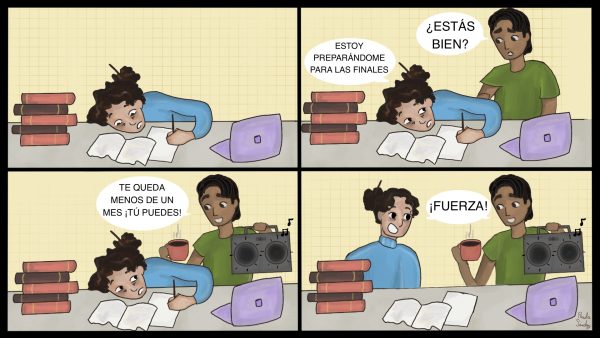A look inside Chicago’s leather museum and community
November 7, 2011
Chicago’s many museums contain countless historic and cultural artifacts, allowing residents and visitors to view numerous works of art, a World War II submarine and—for the slightly more daring—a custom-made red spanking bench.
The Leather Archives & Museum, 6418 N. Greenview Ave., is the only museum in the United States devoted to leather culture, sadomasochism and other alternative sexual practices. Now celebrating its 20th anniversary, the LAM serves as a resource for the leather community and gives visitors a unique glimpse into a world that for many years was hidden from mainstream society.
According to Rick Storer, LAM’s executive director, the museum was founded in 1991 by Tony DeBlase and Chuck Renslow. Renslow, a prominent figure in Chicago’s leather scene and founder of the popular International Mr. Leather contest, opened Gold Coast, the city’s first leather bar, in 1958. His lover, Dom “Etienne” Orejudos, was an artist who painted large erotic murals that moved with the bar to each of its various locations. After Orejudos died from AIDS-related complications in 1991, Renslow searched for an organization that would display the paintings. When he was unsuccessful, he opened his own storefront gallery in Uptown, and the concept for the LAM was born.
The LAM moved to its current 10,000-square-foot location in 1999 to accommodate its growing collection of artifacts donated by members of the leather and S&M community. Although the building may have changed, Storer said the purpose of the organization remains the same.
“Our mission is to collect and preserve; to provide a place where this community’s history and culture can be preserved in a building that is owned by the leather community,” Storer said. “Our first goal is to keep it safe. The second goal—which I think is a little more important—is to provide access to it.”
Storer said the LAM is actually three institutions in one. The building houses a library with more than 12,000 books, 13,000 magazines, 100 journals and 5,000 films devoted to leather and kink. The museum’s collection of more than 8,000 contemporary and historic artworks and artifacts highlights aspects of leather and S&M culture, such as jackets, vests, patches and erotic toys. The archival collection contains unpublished records, letters and other documents used by scholars to do analysis on the leather community.
According to Storer, LAM uses leather as an umbrella term for many sexual subcultures and fetishes, including rubber, furries (individuals who dress up as stuffed animals) and practitioners of bondage and discipline, sadism and masochism. Although leather culture is predominantly gay-oriented, Storer said the LAM strives to be inclusive of all genders and sexual orientations. Last year, the museum launched the Women’s Leather History Project to analyze and document women’s involvement in the leather community.
Alex Warner, the project’s historian and creator of the museum’s “A Room of Her Own” exhibit, said female fetishists have a specific and unique history that grew out of gay leather clubs of the ’60s and ’70s. While many women’s groups during that time declared S&M to be anti-feminist, leather activists argued that their sexual practices were not incompatible of feminism.
Documenting the history of the leather community is one of the LAM’s primary objectives, according to Storer, and to date the museum has recorded the personal histories of approximately 100 leather enthusiasts around the country.
“When you’re talking about sex, you’re talking about something very intimate [that] people hold as private,” he said. “There are a lot of facets of leather and BDSM sexuality for which there is no hard documentary evidence. We rely on oral histories to fill in those gaps, [and] to provide insight into places where photography and other documentary methods aren’t permitted.”
Storer explained that the leather subculture developed when a large number of gay veterans returned from World War II and searched for a community where they could continue to socialize. They eventually adopted the traditions and practices of motorcycle clubs, including leather jackets, fraternal patches commemorating years of membership and achievements, and a hyper-masculine brotherhood. Leather clubs spread throughout the country, including several in Chicago.
Michael S., 45, is the current president of the Chicago Leather Club, a traditional back patch organization that was started in 2001. According to Michael, the club has five full members who have gone through the pledging process and earned their patches, and has more than 20 associate members. He described the CLC’s mission as one of service to the community, education and outreach, unlike social sexual groups such as the Chicago Hellfire Club. CLC members hold monthly meetings, organize “munches,” or informal social gatherings often held at restaurants and participate in fundraising for leather organizations.
Michael, who identifies himself as a leatherman, said he first learned of the BDSM and leather communities in the early ’90s through the Internet. His wife at the time did not share his growing interest in S&M, and the two soon divorced. He is now remarried and has a master/slave relationship with his current wife, Angie, who is also a CLC officer.
Despite the fact that he is the president of the CLC, Michael said he is still uncomfortable being completely open about his sexual tastes and lifestyle. He is not “out” to coworkers, and most of his friends are within the leather and S&M community.
Both Michael and Storer said they believe that mainstream society has become more tolerant and open to the leather lifestyle. Michael, however, commented that many long-term members of the community are upset regarding how many of the culture’s traditions, such as back patches, are being lost and that its meaning is becoming diluted.
“It’s changing,” Michael said. “I’m waiting for the sitcom where you have the dominatrix living next door. Then I’ll know it’s really over, and we’re no longer rebels.”
For more information on the Leather Archives & Museum, including gallery hours and admission rates, visit LeatherArchives.org.
CineKink, a New York-based festival showcasing sex-positive and kink-friendly documentaries, shorts and feature films, will be at the Leather Archives & Museum for the Chicago leg of its national tour on Nov. 18–19.
According to CineKink organizer Lisa Vandever, the films selected for Chicago were culled from those screened during last March’s six-day festival. This year’s assortment includes a selection of award-winning shorts determined by CineKink’s film jury: “Kink Crusaders,” a documentary about the history of the International Mr. Leather contest, and “Indietro,” which won the Audience Awards for Best Documentary and Best Narrative Feature, respectively.
Vandever said while the number of films submitted to the festival has only increased slightly since CineKink was founded eight years ago, she has seen a large increase in their overall quality.
“I think there is more of an awareness of the festival and [directors] are creating films targeted specifically for it,” she said. “I do think there is a sex-positive movement out there, and people are hungry to talk about sex and learn more about it.”
For more information on the CineKink film festival, including a full program listing and ticket information, visit CineKink.com







